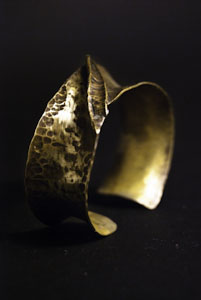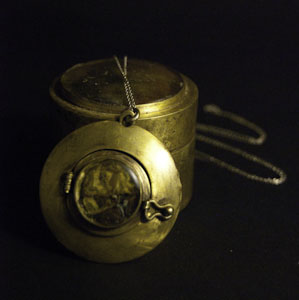Kidney Ear Wires

Hello. Today I'm going to show you how to make your own kidney ear wires. I have two styles so it's going to be a little long. The first style has a double wire hook that wraps up onto the wire and the second is a little more basic and is perfect for more minimalistic designs.

For both styles I started with my basic tools. Here I used half hard 20 gauge wire, my rounds pliers, and my metal cutters. I also got together a couple of objects that I could use to form the loops of the ear wires. I have experimented with many different dowels and other objects but I really like the size of the sharpie marker for shaping the kidney ear wire. It creates a nice round loop that isn't too big or too small. Plus I always have one around anyway so it's handy.
Doubled Hook Kidney Ear Wire
To start you need to cut two pieces of 5-6 inch wire. I only show how to make one, but if you want to make a matching pair I suggest manipulating both wires at the same time through every step.
Start by measuring the desired length of the ear wire. This end will be the shorter end because you need extra length on the other end to form the hook.
Then grab the longer side Abbott 1/4 of an inch above where the shorter side ends and wrap it around one side of the pliers so it crosses over the top of the wire.
Measure how long you want your hook to be and make sure to add some length to bend the end to form the hook. The bend the wire straight back an press it together to form a tight bend making a strait section of double wire that crosses over the top of the main wire again.
Continue wrapping 2 or more times depending on how much wire is left or how many times you think looks good. I cut my wire a little short and was only able to wrap it around twice.
Grab the end of the straight double wire with the round pliers and curve the end until it makes a nice hook. Make sure not to bend it too much. You want the end of the hook to easily fit in this hook.


Cut off any remaining wire so that there is about 1/4 of an inch after the final bend in the hoop. This length can vary depending on what style you are going for, but a general rule of thumb is that it should be at least as long as the average width of an earlobe.
After cutting off the excess wire you can file the wire flat and then sand the edges to create a nice smooth and rounded end. It is best to file the wire down flat first and then sand the edges with a fine sand paper (at least 600 grit) to create a smooth slightly rounded end. This is one of the most important steps for making any ear wire. This is the part of the wire that people will feel the most. If it is rough and irritating they might not like wearing the earring no matter how beautiful it might be.
Minimalist Kidney Earwire
For this design start with the same tools as the previous one and two 5-6 inch long pieces of half hard wire. I bent the wire in the same way around a permanent marker and now will begin shaping it.
Here is what it should look like so far. If it's not entirely flat, now is a great time to flatten in out by gently hammering it or using some flat pliers.
Cut off any remaining wire so that there is about 1/4 of an inch after the final bend in the hoop. This length can vary depending on what style you are going for, but a general rule of thumb is that it should be at least as long as the average width of an earlobe.
If you made it this far I hope you enjoyed it. This post turned out to be kind of long. I would love any feedback and would really like to see any jewelry that you make using this tutorial or not.
Thank you and have a great day!
Lyndy














































